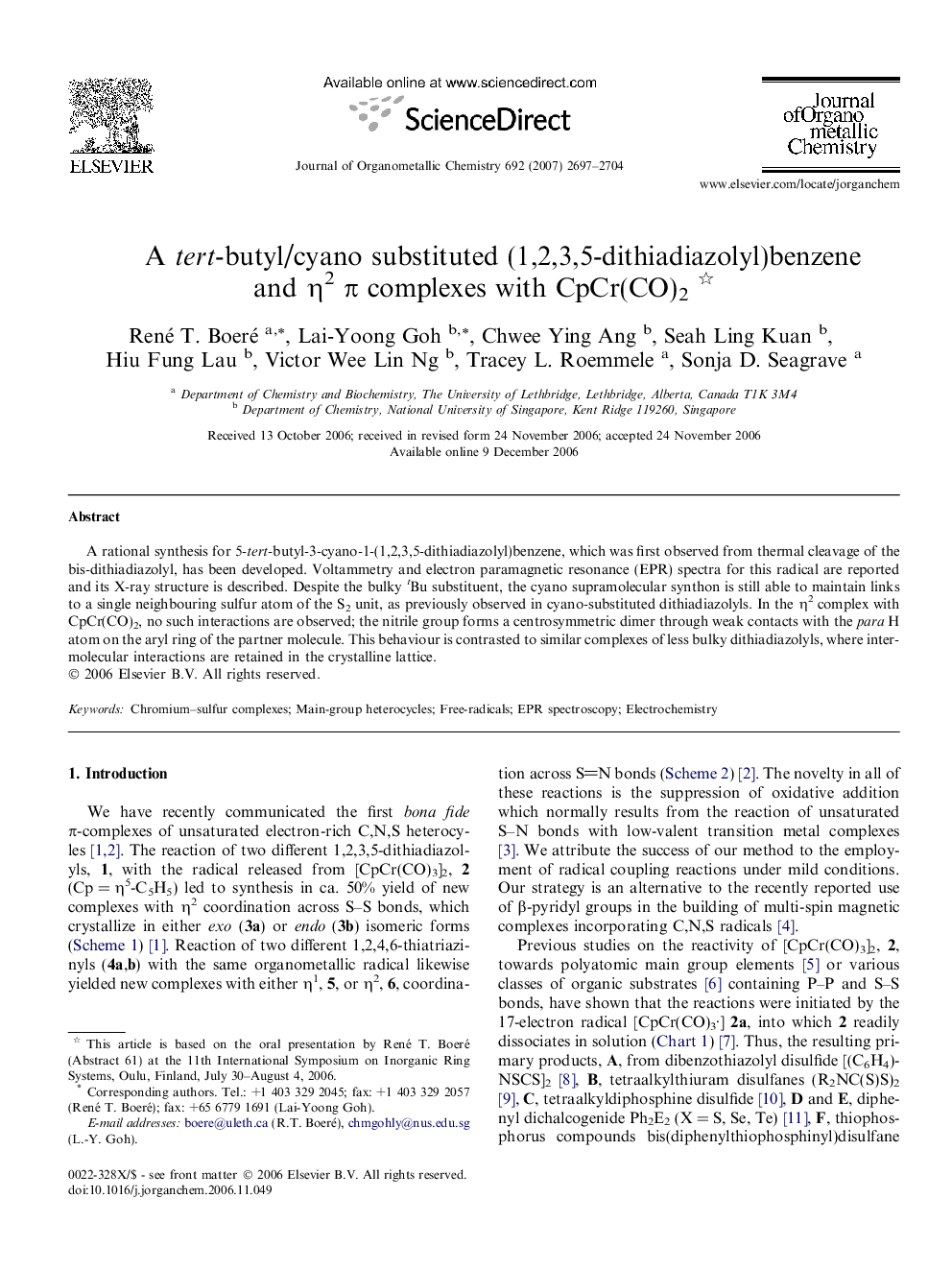| Article ID | Journal | Published Year | Pages | File Type |
|---|---|---|---|---|
| 1325173 | Journal of Organometallic Chemistry | 2007 | 8 Pages |
A rational synthesis for 5-tert-butyl-3-cyano-1-(1,2,3,5-dithiadiazolyl)benzene, which was first observed from thermal cleavage of the bis-dithiadiazolyl, has been developed. Voltammetry and electron paramagnetic resonance (EPR) spectra for this radical are reported and its X-ray structure is described. Despite the bulky tBu substituent, the cyano supramolecular synthon is still able to maintain links to a single neighbouring sulfur atom of the S2 unit, as previously observed in cyano-substituted dithiadiazolyls. In the η2 complex with CpCr(CO)2, no such interactions are observed; the nitrile group forms a centrosymmetric dimer through weak contacts with the para H atom on the aryl ring of the partner molecule. This behaviour is contrasted to similar complexes of less bulky dithiadiazolyls, where intermolecular interactions are retained in the crystalline lattice.
Graphical abstractMain group ring compounds are a rich and diverse source of thermodynamically stable free radicals, yet the ability of such radicals to act as ligands in coordination chemistry has received only limited attention. We recently reported an unprecedented η2 coordinated π complex of 5-tert-butyl-3-cyano-1-(1,2,3,5-dithiadiazolyl)benzene with CpCr(CO)2. The synthesis, crystal structure, EPR spectrum and cyclic voltammetry of the main group free radical is described here in detail, and the intermolecular contacts observed in its crystal structure are contrasted to those found in the complex.Figure optionsDownload full-size imageDownload as PowerPoint slide
